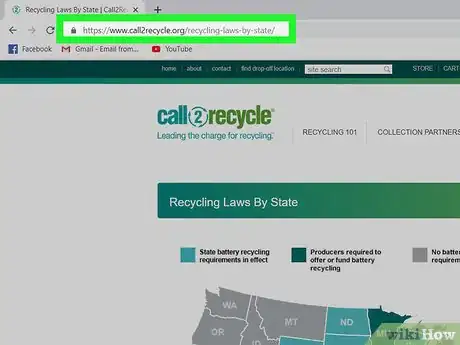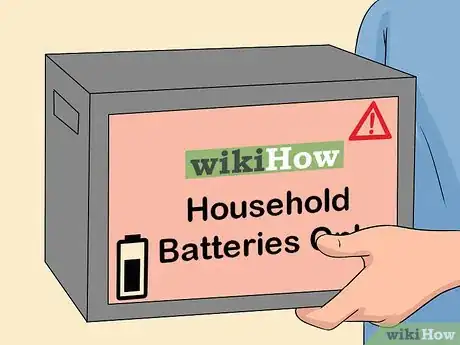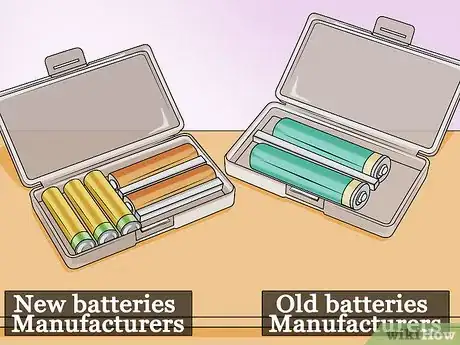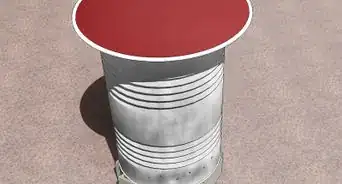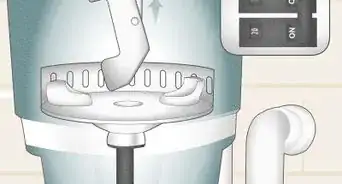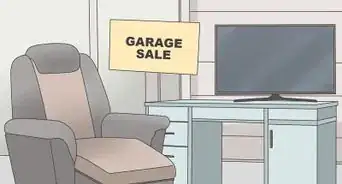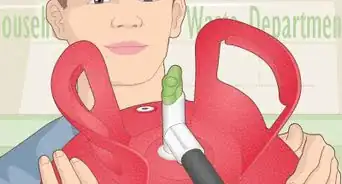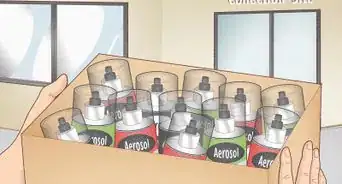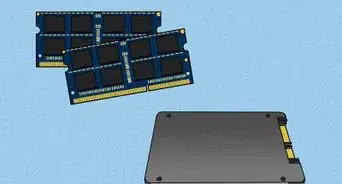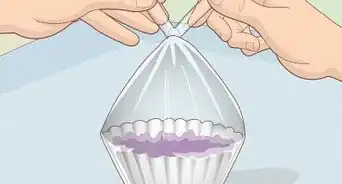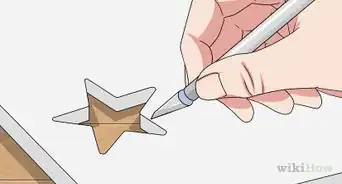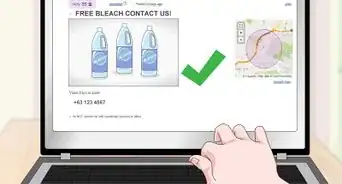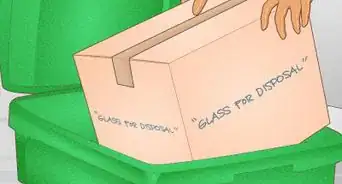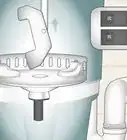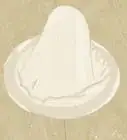This article was co-authored by Kathryn Kellogg. Kathryn Kellogg is the founder of goingzerowaste.com, a lifestyle website dedicated to breaking eco-friendly living down into a simple step-by-step process with lots of positivity and love. She's the author of 101 Ways to Go Zero Waste and spokesperson for plastic-free living for National Geographic.
There are 9 references cited in this article, which can be found at the bottom of the page.
This article has been viewed 20,657 times.
Alkaline batteries are single-use batteries that can’t be recharged. While it’s perfectly safe and legal to throw out your alkaline batteries in the trash (unless you live in California), you could also recycle them so that the zinc, manganese dioxide, and steel parts can be harvested and used for new products. Check out what recycling facilities are near your home or mail them to a facility if there isn’t one near you to safely recycle your alkaline batteries.
Steps
Recycling Alkaline Batteries
-
1Cover the ends of the batteries with tape or put them in a plastic bag. This will prevent any potential leakage from getting out of the battery. You can utilize either or both methods when you decide to recycle your batteries.[1] Keep them separated from other types of batteries.[2]
- Even if you decide to just throw your batteries out in the trash, which you can do with alkaline batteries, it’s still a good idea to cover the ends with tape or seal them in a plastic bag—this will eliminate the chance that anyone might come into contact with battery leakage at the waste facility.
-
2Research your state’s battery-recycling laws to see what you can do. Some states do ask that you simply throw away your alkaline batteries, but most have recycling options available. To find out more about your state’s laws, visit https://www.call2recycle.org/recycling-laws-by-state/.[3]
- This site is also really helpful for learning about how you can safely dispose of other types of batteries and electronics.
Advertisement -
3Check the “recycling locator” to find the closest facility to your home. Depending on where you live, there could be a few drop-off locations close to your home, or you may need to utilize a mail-in option to recycle your batteries. Find out more by visiting https://earth911.com/recycling-guide/how-to-recycle-single-use-batteries/#recycling-locator.[4]
- The recycling locator allows you to pick the specific type of material you’re looking to recycle, so you can specify alkaline batteries to get the most accurate results.
-
4Drop your batteries off at the appropriate facility when you’re able to.[5] If you’re able to take advantage of an in-person drop-off location, that is great! Store your batteries in a safe, dry place until you’re ready to take them to the center.[6]
Tip: Make sure you check the recycling center’s hours so that you don’t stop by when they’re closed.
-
5Mail your batteries to a facility if there isn’t one near your home. This is especially useful if you work in an office or somewhere where a lot of batteries get used on a daily basis. You can find mail-in programs using the recycling locator tool, or you can purchase a large box from a nationwide program called “The Big Green Box” and fill it with your used batteries.[7]
- It does cost money to recycle your alkaline batteries with “The Big Green Box.” The price includes the cost of shipping, handling, and the subsequent recycling that takes place. Find out more at https://biggreenbox.com.
-
6Organize or participate in a hazardous waste event to recycle batteries. While there may not be a recycling facility nearby, there’s a chance that your local community center hosts a semi-annual or annual recycling event. If there isn’t one yet, you could arrange to start one so that people have a safe way to get rid of their batteries.[8]
- Contact your local waste management facility to see if you can work with them and your community to organize an event.[9]
- Find a public location that would be willing to host the hazardous waste drive, like perhaps a public library or your local community center. Get volunteers to help you publicize the event and get information out to the community about when the event will be help and what kinds of materials will be accepted.
Testing and Storing Alkaline Batteries
-
1Do the “drop test” if you don’t have a voltmeter. This works for AA, AAA, C, and D batteries. Hold the battery about 1⁄2 inch (1.3 cm) above a flat surface with the negative side facing down. Drop the battery straight down. If it bounces, it’s dead. If it lands flat and doesn’t bounce, it’s still good.[10]
- Many times, good batteries will actually land and stand up straight without falling over after being dropped.
-
2Use a voltmeter to get an accurate reading of the energy level. AA and AAA alkaline batteries should register at about 1.5 volts if they are still good. Turn on the voltmeter and place the red probe on the battery’s positive end and the black probe on the battery’s negative end. The reading will show on the voltmeter. If the reading is less than 1.3 volts, you can go ahead and dispose of the battery.[11]
Tip: Voltmeters cost about $10 and can be bought online or at a home improvement store.
-
3Avoid pairing old batteries with new batteries to prolong their lives. The performance of whatever product you’re trying to power or charge won’t be as effective as if you were using batteries with the same power level. It could even cause one of the batteries to start leaking or for the good battery to lose voltage faster than it would regularly.[12]
- You should also try to avoid mixing different brands of batteries in the same device for the same reason.
-
4Keep your batteries organized by brand and voltage. Use a plastic container with multiple compartments. Label each compartment with the type of battery, brand-name, and a “new” or “used” label. Use marker on masking tape so you can easily remove or change labels when you need to.[13]
- For example, if you have “X” brand batteries that are both new and used, label one compartment “AAA X Batteries, new” and another one “AAA X Batteries, used.”
Things You’ll Need
Recycling Alkaline Batteries
- Tape or resealable plastic bags
Testing and Storing Alkaline Batteries
- Voltmeter (optional)
- Storage container
- Masking tape
- Pen
References
- ↑ Kathryn Kellogg. Sustainability Specialist. Expert Interview. 28 June 2019.
- ↑ https://www.colorado.gov/pacific/cdphe/household-batteries
- ↑ https://www.call2recycle.org/recycling-laws-by-state/
- ↑ https://earth911.com/recycling-guide/how-to-recycle-single-use-batteries/#recycling-locator
- ↑ Kathryn Kellogg. Sustainability Specialist. Expert Interview. 28 June 2019.
- ↑ https://www.call2recycle.org/recycling-laws-by-state/
- ↑ https://biggreenbox.com
- ↑ https://earth911.com/recycling-guide/how-to-recycle-single-use-batteries/
- ↑ Kathryn Kellogg. Sustainability Specialist. Expert Interview. 28 June 2019.


